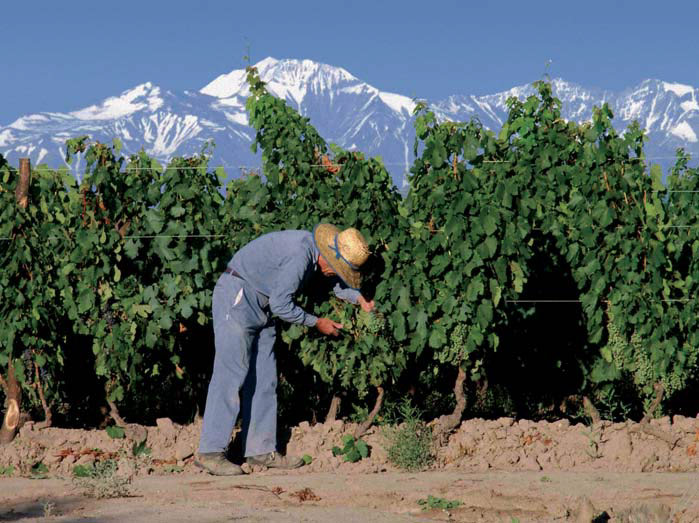Wines of the new world: overview of wine making in ArgentinaAgricultural
Sofía Pescarmona
President of Bodega Lagarde.
Mendoza - Argentina
“The new era of quality wine production in Argentina started at the end of the 90´s when focus was put on Premium wines and export markets”
Sofia Pescarmona is President of the Mendoza´s Lagarde winery which was founded by her grandfather in 1897. It brilliantly combines tradition with experimental curiosity in order to please and surprise the local palate and lovers of good wine worldwide. Through her authoritative outlook, we review the fascinating development of wine production in Argentina and in particular, the province of Mendoza.
Origins and history
The beginnings of the local colonial wine making
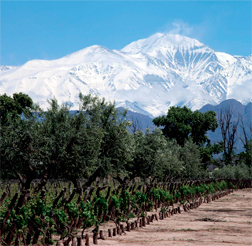
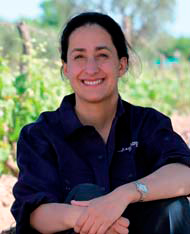

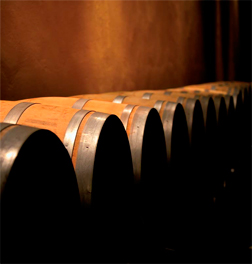
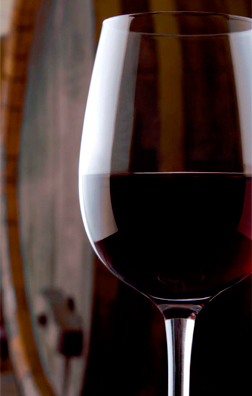
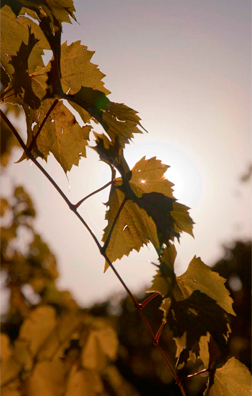
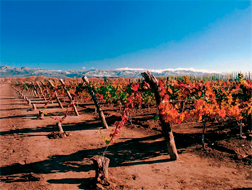
The history of Argentine wine production dates back to the colonial era since the cultivation of the vine was closely linked to agricultural practices of the Spanish colonists. The first species of the Vitis common grape vine reached Peru in the middle of the 16th century, from there they passed on to Chile and, as from 1551 they were introduced into Argentina, mainly by Catholic priests who planted vineyards close to their monasteries in order to guarantee the supply of sufficient wine for use in celebrating mass.
The first vineyards were planted in the Provinces of Mendoza and San Juan between 1569 y 1589 which, over time, gave rise to the development of a huge industry that transformed the arid nature of the region into a vast oasis. Favoured by optimum climate and soil conditions, winemaking developed rapidly and extensively.
During the 17th and 18th centuries and the first half of the 19th century, the Cuyo region, which includes the provinces of Mendoza and San Juan, was consolidated as the principal region for production whilst the main centres for consumption were the cities of Rosario, Córdoba and Buenos Aires.
Evolution and development of the industry
From the second half of the 19th century onwards, there was a radical transformation in the production of wine, due to various factors such as: the increase in internal demand which was generated, to a great extent, by the large migratory influx from Europe and the strengthening of the market thanks to the arrival of the railway. Previously, a cart going from the city of Mendoza to Buenos Aires, would take three months to arrive whereas by rail, with a steam locomotive, the trip only took two days.
The first vineyards were planted in the Provinces of Mendoza and San Juan between 1569 y 1589 which, over time, gave rise to the development of a huge industry that transformed the arid nature of the region into a vast oasis
An important contribution of the European immigrants was their knowledge of wine making techniques and the cultivation of varieties of vine suitable for fine wines. In this way, innovations were introduced into the oenological practices applied in the Mendoza wineries up until then and these were carried out in the Quinta Normal de Agricultura in Mendoza which was the first Agricultural School in the Argentine Republic, as well as the development of other specialised study centres.
In the 20th century, the development of Argentina´s wine industry was aimed at towards a continually growing internal market. Argentina was one of the richest countries in the world and exports grew following the shortages caused by the two World Wars. In the first half of the century, the expansion of the wine making industry was consolidated in terms of quality and volume.
Industry data shows that in 1941 there were 200,000 cultivated hectares in the country. In Mendoza, 80% of the vineyards had quality French grapes and the Malbec grape was the principal variety with 43,500 hectares.

The crisis
The continuous political and economic crisis meant that at the beginning of the seventies, Argentina´s wine industry had turned over to mass house wines. At that time, the average consumption per capita in Argentina was close to 80 litres of wine per year, a consumption level only found in European producing countries such as France, Italy and Spain.
An important contribution of the European immigrants was their knowledge of wine making techniques and the cultivation of varieties of vine suitable for fine wines
In the 80´s there was an important drop in the consumption of wine which resulted in mergers of many companies. In this period, the vines covering almost 30% of the surface area were eradicated and the vineyards were dominated by varieties with a low oenological quality and high output.
The recovery through modern viticulture
In the 90´s, Argentine winemaking and winegrowing experienced a real transformation as a result of the change in the production model from one based on volume to one of quality. The favourable exchange rate during the period of conversion promoted an important influx of foreign investment. Moreover, the recovery of the planted land was undertaken with varieties of a high oenological value.
In the 90´s, Argentine winemaking and winegrowing experienced a real transformation as a result of the change in the production model from one based on volume to one of quality
Oenologists from France, California and Australia introduced modern techniques and knowledge of viticulture and oenology such as yield control, fermentation temperature control and the use of new oak barrels amongst others.
At the same time, it was observed during this period that there was a dramatic drop in the domestic consumption of wine. The Argentine wine producing industry changed strategy and concentrated more aggressively on the export market.
At the end of the 90´s, a new era of quality viticulture commenced but this time, focusing on Premium wines and the export markets.
Climate and geography
Argentina´s main wine growing regions can be found in the western part of the country, at the foot of the Andes between the Tropic of Capricorn to the North and 42º parallel to the South. They are located preferably in wide valleys or sloping plains. The proximity of the Andes mountain range means that the wine crops are cultivated on plains with a slope from 0.2 to 2% and at altitudes that are between 300 and almost 3,000 metres above sea level. The soil throughout the country is in general, of alluvial origin and some regions with clay, gravel and limestone soils.
The majority of the regions have a semiarid desert climate, with annual rainfall that rarely exceeds 250 mm per year. In the warmer regions, such as the provinces of Catamarca, La Rioja, San Juan and Eastern Mendoza, the summer temperatures during the growing seasons can be high during the day with temperatures above 40°C and the night temperatures can drop down to 10°C at night. Some regions have more temperate climate, such as Cafayate in Salta, Neuquén, Río Negro and the far West of Mendoza, which includes the regions of Luján de Cuyo and the Valle de Uco.
In winter, temperatures can drop to below 0°C, but they do not cause damage to the plants since this is the winter resting period. Temperatures below 0°C during the growth period can cause damage in the vineyards. Late frosts are more frequent than early frosts and some years, have caused important damage in certain areas.
During most of the growing season the climate is dry and therefore, diseases that affect the grape are infrequent. Treatments are not very intense or frequent and therefore, are favourable for organic wine growing.
Treatments for diseases are not very intense or frequent and therefore, are favourable for organic wine growing
The wine growing regions further to the West and closest to the Andes, are particularly prone to the effects of the strong wind called Zonda, that blows from the mountains during spring and summer. This strong dry and hot wind can stop the flowering process and reduce the yield.
The scarce rain is normally registered during the summer months and is often in the form of hail which can damage the vines.
The periodic appearance of “El Niño” phenomenon may have a strong influence and cause more or less extended periods of rain and relatively high humidity, a typical situation that promotes diseases outbursts as a result of fungi.

Irrigation
The irrigation system used to bring water from the thaw in the Andes was developed in the 16th century by the Spanish colonialists through techniques previously used by the Incas and has been a vital component of Argentina´s agriculture.
Nowadays, water distribution is regulated by a Water Law. Water flows down from the mountain through a network of canals which are progressively smaller until they reach the properties that have a “right to water” for its use.
The vineyards planted on lands that do not have a right to surface water, resort to using subterranean water by means of drilling between 60 to 200 metres below the surface, in order to recover water from the underground aquifers.
Whilst, historically, watering through flooding is the most used method, in late 1990, drip irrigation started to become the most popular system. Although the installation is expensive, it provides the most efficient use of water. Apart from saving water, it facilitates control of the production and increases the potential quality of the grape through the regulation of water content of the plants.
The argentine wine market
The new technology of the wineries, interest from the local and, for a while now, foreign market, investments and the change in mentality and knowledge of the consumer, have slowly moulded the wine producing industry. The national oenological map changed noticeably and new production areas have appeared which, together with the traditional areas, have meant that the figures for Argentine wine production numbers are very different to those from their beginnings.
The domestic market
The drop in the consumption of table wine started 30 years ago but at the same time, there was a growth in Premium wines demand. In 1970, the total annual consumption fell from 80 litres per capita to less than 30 litres per capita. Today, Argentina is amongst the top ten consumers of wine in the world, with the United States leading the ranking where traditional markets such as France and Italy coexist with those of the New World, Australia, Chile and the emerging markets such as China.
The behaviour of the figures for consumption in Argentina did not follow the worldwide trend but it was in line with those countries which had high consumption levels, such as the traditional Europeans. Thus, between 2005 and 2010, the domestic market fell to an average rate of 1.6% and in 2010 it fell by 2.6% when the annual world growth was at 2.9%.
As far as the domestic market is concerned, the conclusion reached is that in recent years there has been a fall in the total demand for wine whilst there has been relatively strong growth in the medium and high price market segments.
Export market
An analysis of Argentine export figures for wine shows that between 2006 and 2011 the average rate of annual growth was 19% whilst the exports of wine on a worldwide level grew 2.9% per year. However, an analysis of the total export figures for Argentine wine by volume highlights that they dropped as from 2008, as a result of the sharp reduction in the export of wine in bulk.
The irrigation system used to bring water from the thaw in the Andes was developed in the 16th century by the Spanish colonialists through techniques previously used by the Incas and has been a vital component of Argentina´s agriculture
What makes a substantial difference is the increase in the average export price and therefore, the incentives for businessmen to develop this segment. In the macro-economic figures, it can be said that there is an increase in the demand for Argentine wines, as it went from 16% of the total business in 2005 to 21% in 2010 and, as far as turnover is concerned, therefore, the effect on the average price increase was 30% to 40%, for the same period.
In 2011, Argentina exported USD 716 million of bottled wines, almost 300 million, when five years ago it was less than half, almost 300 million. So, the rate of growth over the last five year was 140%.
The main market destinations for Argentine wines are the United States, Canada, Brazil and the United Kingdom.
Insurance in the wine industry
Néstor Ariel Donnini. Reinsurance Manager
Carlos Alberto Gutiérrez. Property and Liability Manager
La Mercantil Andina S.A.
Mendoza - Argentina
Insurance activity accompanies wine production in all the links of its value chain, from the vineyards to its sale. The following is an outline of the insurance products specifically designed for this market segment.
Hail Insurance for Vines
- Cover: Damage caused exclusively by hail. There is also a public cover taken out by the Government of the province of Mendoza which includes all the registered growers in the province. It is a catastrophe cover and contemplates a non deductible franchise of 50%. Cover commences from the date that the policy is taken out or the flowering of the plantations, whichever occurs latest.
- Additional covers: Damage produced by late or spring “radiation frost” type and “advection frosts in the restricted sense” which only affect the Province of Mendoza´s microclimate between the months of October and November. The so-called “advection frost in the classic sense” and “mixed frosts” are expressly excluded. “Early frosts” that arise in the region at the end of the summer or beginning of autumn, are also excluded.
Insurance for Wineries
The intention is to offer a wide range of covers that protect the Insured´s property and the liability in the event of a claim. It is directed at the Winery´s owners or administrators.
Operational All Risk
- Material Damage and Business Interruption Expenses.
Additional covers:
- Fire and/or earthquake damage.
- Hurricane, wind, cyclone, tornado.
- Hail.
- Insufficient cold.
- Fire extinguishing expenses.
- Extraordinary expenses.
- Debris removal.
- Glass.
- Theft of general contents, theft of valuable in safe and theft of valuables in transit.
- Electronic computer equipment.
- Damage by water and flooding.
- Accidental spillage and pollution.
- Professional Fees.
- Reinstatement of files and documents.
- Temporarily removed goods.
- Contractors´ equipment.
- Repairs, extensions.
Liability
- Basic cover: It is directed at protecting the Insured against the possible liability that may arise under articles 1109 to 1136 of the Civil Code, incurred exclusively as a consequence of carrying out its activity.
- Additional covers: The following are some of
the optional covers that can be included:
- Fire, lightning, explosion, electrical discharges and gas leaks.
- Poster, sign posts and/or similar objects.
- Steam installations, hot water or hot oil.
- Lifts or goods lifts.
- Use of fire arms.
- Contractors and subcontractors.
- Travelling salesmen and market sellers.
- Goods in the care, custody and control of the Insured.
- Supply of food without charge.
- Sale and/or services of food and drink.
- Surveillance of vehicles.
- Cranes, winches and elevators.
- Spectators Liability (product launches, fashion shows).
- Products liability.
Transport Insurance
There are three different forms of cover:
- Policy for a specific sending, in which the cargo is covered for an individual voyage and destination.
- Policy for a specific vehicle, which cover the trips undertaken by one vehicle during a specified period of time.
- Open Policy, based on a monthly declaration. This form covers all shipments carried out by the insured within a specified period (a year) and which are declared monthly.
Different covers are offered depending on the means of transport (air, land or sea).
